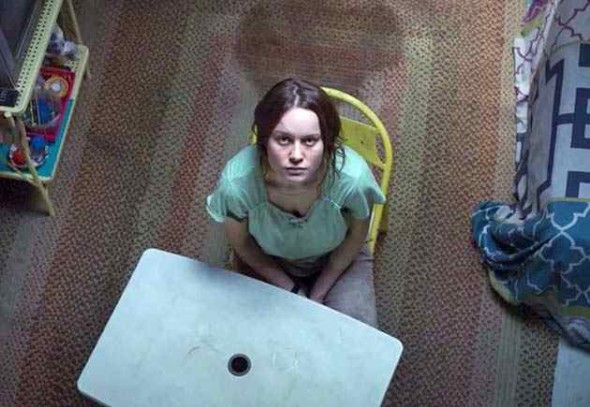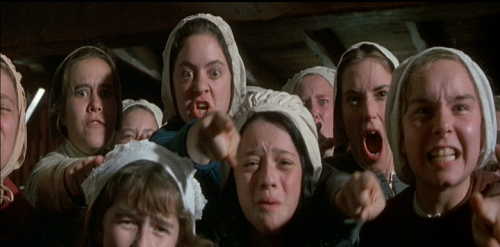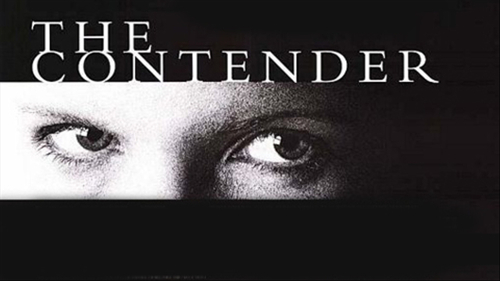Trigger Warning: Rape, Sexual Assault
The American public’s morbid fascination with women and girls held captive by their rapists, in some cases for years, stems in part from the many missing girls, presumed dead, we’ve all read and heard about. Because the kidnapped-but-survived ending is the happier one, even though a real-life victim has suffered through an ordeal, we want her to answer our questions. How did you survive? Why didn’t you escape before? What are you going to do now? The new film Room directed by Lenny Abrahamson and starring Brie Larson as the abducted woman we know in the first part of the film only as “Ma” attempts to give us some possible answers.
Ma lives with her five-year-old son, Jack (Jacob Tremblay) in the place they call “room,” a converted garden shed with a bed, table, tub, sink, skylight, kitchenette and heat and electricity. They are kept there by the man who abducted Ma seven years before, when she was 17. We see Jack and Ma’s daily routine, waking up in the same bed, Jack saying, “Good morning,” to the pieces of furniture, doing exercises together, having meals, watching an old TV and splashing each other in the bath at night. Then Ma puts Jack to bed in a closet (called “wardrobe” even though they are presumably in the US: the out author of the original book who also wrote the screenplay, Emma Donoghue, is originally from Ireland and the production is an Irish/Canadian one) so when their captor punches the security code to open the door and rape her in the bed, as he does every night, Jack won’t see.
Ma has tried to make their lives seem almost normal to Jack, with homemade toy boats floating in the top of the toilet tank and bedtime storybooks. But we see signs of how constricted their lives are: the tops of the knives Ma uses to make dinner are blunted and because she can’t see a dentist or doctor she loses a tooth and has an old wrist injury that pains her. Jack’s hair is so long that we at first mistake him for a little girl–apparently their captor will not let Ma keep scissors in the room. At one point the kidnapper, angry at Ma, cuts off the electricity and heat on a frigid day, which they spend in layers and scarves, eating peanut butter sandwiches. Sometimes during a “normal” day they scream at the skylight. After which Ma says, “I guess they still can’t hear us.”
Ma fluctuates between depression, some days not wanting to get out of bed, and desperation, as she brainstorms ways that she and Jack can escape. She is always stretched three ways: trying to keep Jack safe and somewhat sheltered from what she’s going through (which means appeasing her captor but also telling Jack when they’re alone, “He’s not our friend”), trying to be a good parent and thinking about how to get the both of them out of “room.”
First she needs her son to understand why they need to leave. She tells him, “Do you remember how Alice wasn’t always in Wonderland? I wasn’t always in Room. I’m like Alice.” With his reluctant help, she devises one plan that fails then, worried that their now unemployed captor will no longer be able to feed them, she comes up with a much darker–and scarier–scheme in which Jack must pretend to be dead and escape while the captor goes to bury him in a secluded spot. Anyone who watches horror movies (or even the trailers for horror movies) will be filled with dread during the moments when first the kidnapper, then Jack seem to be wavering from Ma’s plan, but in spite of the glitches, both Jack and Ma are eventually freed.
Instead of being locked in room, Ma (we find out her name is Joy) and Jack, have an implausibly brief stay in a hospital room, one high above the ground, in a corner with floor-to-ceiling windows and a panoramic cityscape view (like the rest of the film, beautifully shot by cinematographer Danny Cohen) which makes Jack’s question, “Are we on another planet,” seem perfectly reasonable. But after the scenes in the hospital, part two of the film is a lot less compelling, not just because we no longer have a nemesis for the two main characters, but because the imagination and craft that went into the first part of the film seems to desert the screenwriter. Joy and Ma hole up with her mother (Joan Allen) and Leo (Tom McCamus) the man she lives with after her divorce from Joy’s father, in their suburban house. The media stalking Joy outside the door make leaving impossible.
But Joy seems to have very little life of her own outside of being “Ma”: a deficit that cannot be attributed only to the character’s untreated trauma. While Joy looks at an old yearbook photos of her friends, no one from her old life (besides her parents and Leo, who was a friend of the family before he moved in with her mother) seems to have any contact with her, even as her story is gaining national attention. As Joy sits on the floor of her childhood bedroom we see an electric guitar in the background which could easily be exchanged for a Bible or a buzz saw without changing anything we know about Joy–because, except for a brief outburst at her own mother, we never get to know her beyond her role as Ma. She never seems interested in going back to school or doing anything with her life other than caring for Jack. The movie doesn’t seem to care either.
I was able to suspend my disbelief, at least momentarily, in the first part of the film. I still wondered, for example, if the kidnapper raped Joy every night and she did not have any type of birth control why she had only one child. But the screenplay neglects most of a kidnapping’s aftermath, so in the second part I questioned most of what was onscreen. We see Joy and Jack watching a TV report on their case, but we don’t see how Joy would have to shield Jack from hearing all the gory details of her imprisonment, over and over, in the media. The script ignores that her face would be one that many people recognized, and with that recognition she would carry a stigma of being best known as a rape survivor, and her son recognized as the product of that rape, a facet explored only in a brief and unsatisfactory scene with Joy’s father (William H. Macy). Worst of all, Joy and her ordeal would become fodder for the internet with everyone commenting and even joking (remember Joan Rivers saying of the women Ariel Castro held captive in his home that they should have been grateful for the free rent?) on the terrible circumstances she had survived. I thought of how Elizabeth Smart, a real-life, long-term abductee, has turned the notoriety foisted on her around, by becoming a spokeperson on the issues her case highlighted. I despaired that her fictional counterpart was a lot less interesting than she turned out to be.
Brie Larson gives a very strong performance as Joy and actually looks like a woman held captive (and later, one still suffering the after-effects) as opposed to the prettied-up version another film would present to us. But I couldn’t help comparing this performance to the one she gave in Short Term 12, another role of an unglamorous trauma survivor, but one in which, in spite of its disappointing baby-makes-everything-okay ending, the audience was allowed to see the character as more than just a sometimes very troubled mother-figure (which she also played in her job as a counselor to at-risk teens). Jacob Tremblay is also very good as her son, though maybe because of An Open Secret or maybe just because so many talented child actors in the past have become adults without many prospects, I worry about what will happen to this excellent, young actor, more than I worried what would become of his character or of his mother’s, a bad sign for any film.
I realize I’m in the minority, that a lot of audience members and critics (especially women) love this film, but sometimes a “strong woman” at the center of a film, even one played by a talented actress, isn’t enough. We need our women protagonists, even the ones written by women, to be more than just “Ma.”
[youtube_sc url=”https://www.youtube.com/watch?v=6C6fZ-fwDws” iv_load_policy=”3″]
Ren Jender is a queer writer-performer/producer putting a film together. Her writing besides appearing every week on Bitch Flicks has appeared in The Toast, xoJane and the Feminist Wire. You can follow her on Twitter @renjender.
















